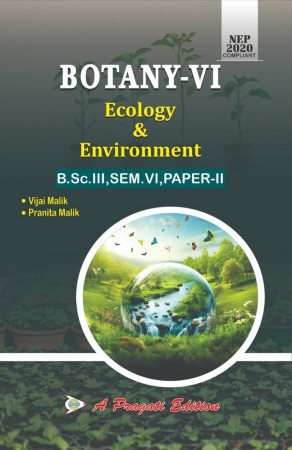
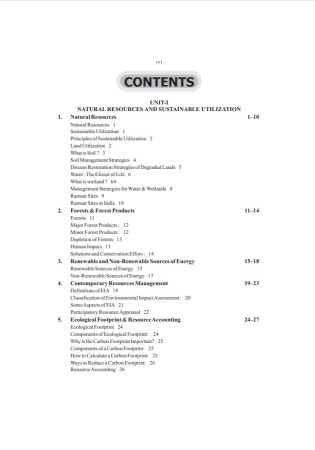
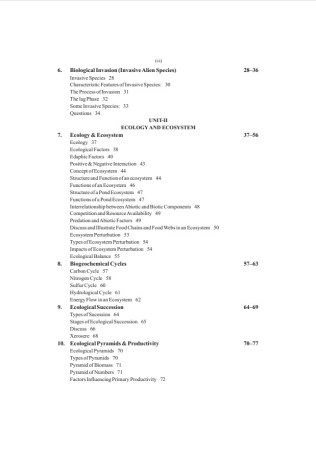
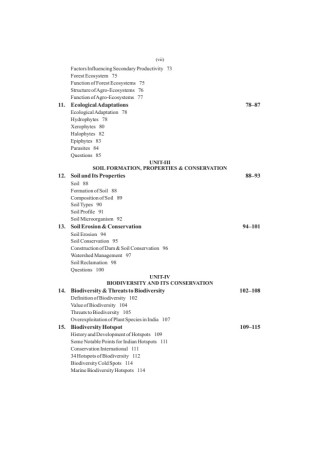
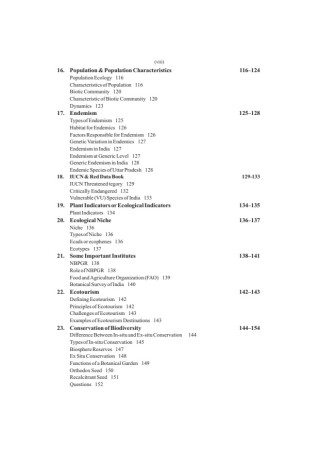
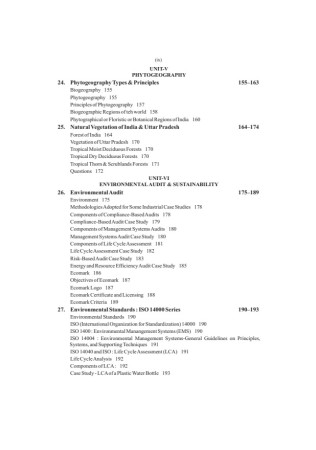






0 Ratings
0 Reviews
474 Views
Ecology and Environment are two closely related but distinct concepts that are fundamental to our understanding of the natural world. Ecology is the s .... Read More
Ecology and Environment are two closely related but distinct concepts that are fundamental to our understanding of the natural world. Ecology is the scientific study of the relationships between living organisms and their environments. It encompasses the interactions between organisms and their physical surroundings, as well as the relationships between different species. The environment, on the other hand, refers to the sum total of all external conditions, factors, and influences affecting the life, development, and survival of organisms. It encompasses both living (biotic) and non-living (abiotic) components, such as air, water, soil, climate, plants, animals, and human activities. The environment is dynamic and constantly changing, and it plays a crucial role in shaping the characteristics and behaviors of living organisms. Together, Ecology & Environment form the foundation for our understanding of the natural world and the intricate connections that sustain life on Earth.
| Sr | Chapter Name | No Of Page |
|---|---|---|
| 1 | UNIT-I, NATURAL RESOURCES AND SUSTAINABLE UTILIZATION, 1. Natural Resource | 10 |
| 2 | 2. Forests & Forest Products | 4 |
| 3 | 3. Renewable and Non-Renewable Sources of Energy | 4 |
| 4 | 4. Contemporary Resources Management | 5 |
| 5 | 5. Ecological Footprint & Resource Accounting | 4 |
| 6 | 6. Biological Invasion (Invasive Alien Species) | 9 |
| 7 | UNIT-II, ECOLOGY AND ECOSYSTEM, 7. Ecology & Ecosystem | 20 |
| 8 | 8. Biogeochemical Cycles | 7 |
| 9 | 9. Ecological Succession | 6 |
| 10 | 10. Ecological Pyramids & Productivit | 8 |
| 11 | 11. Ecological Adaptations | 10 |
| 12 | UNIT-III, SOIL FORMATION, PROPERTIES & CONSERVATION, 12. Soil and Its Properties | 6 |
| 13 | 13. Soil Erosion & Conservation | 8 |
| 14 | UNIT-IV, BIODIVERSITY AND ITS CONSERVATION, 14. Biodiversity & Threats to Biodiversity | 7 |
| 15 | 15. Biodiversity Hotspot | 7 |
| 16 | 16. Population & Population Characteristics | 9 |
| 17 | 17. Endemism | 4 |
| 18 | 18. IUCN & Red Data Book | 5 |
| 19 | 19. Plant Indicators or Ecological Indicators | 2 |
| 20 | 20. Ecological Niche | 2 |
| 21 | 21. Some Important Institutes | 4 |
| 22 | 22. Ecotourism | 2 |
| 23 | 23. Conservation of Biodiversity | 11 |
| 24 | UNIT-V, PHYTOGEOGRAPHY, 24. Phytogeography Types & Principles | 9 |
| 25 | 25. Natural Vegetation of India & Uttar Pradesh | 11 |
| 26 | UNIT-VI, ENVIRONMENTAL AUDIT & SUSTAINABILITY, 26. Environmental Audit | 15 |
| 27 | 27. Environmental Standards : ISO 14000 Series | 4 |
| 28 | 28. Strategies and Debates on Sustainable Development & Sustainable Agriculture | 9 |
| 29 | 29. Sustainable Development in Practice | 6 |
| 30 | UNIT-VII , POLLUTION, WASTE MANAGEMENT & CIRCULAR ECONOMY, 30. Pollution | 10 |
| 31 | 31. Bioremediation | 5 |
| 32 | 32. Wastewater Treatment System | 19 |
| 33 | 33. Regulatory Framework For Pollution Monitoring and Control | 6 |
| 34 | 34. Compressed Natural GAS (CNG) | 4 |
| 35 | 35. Waste | 8 |
| 36 | 36. Sanitary Landfilling, Biogas & Circular Economy | 7 |
| 37 | UNIT-VIII, ENVIRONMENTAL ETHICS, CARBON CREDITS & ROLE OF GIS, 37. Environmental Ethics | 4 |
| 38 | 38. Carbon Sequestration & Climate Change | 9 |
| 39 | 39. Acid Rain & Ozone Layer | 5 |
| 40 | 40. Nuclear Accidents and Holocaust | 2 |
| 41 | 41. Wasteland Reclamation | 4 |
| 42 | 42. Geographic Information System (GIS) | 6 |
| 43 | 43. Global Positioning System | 6 |